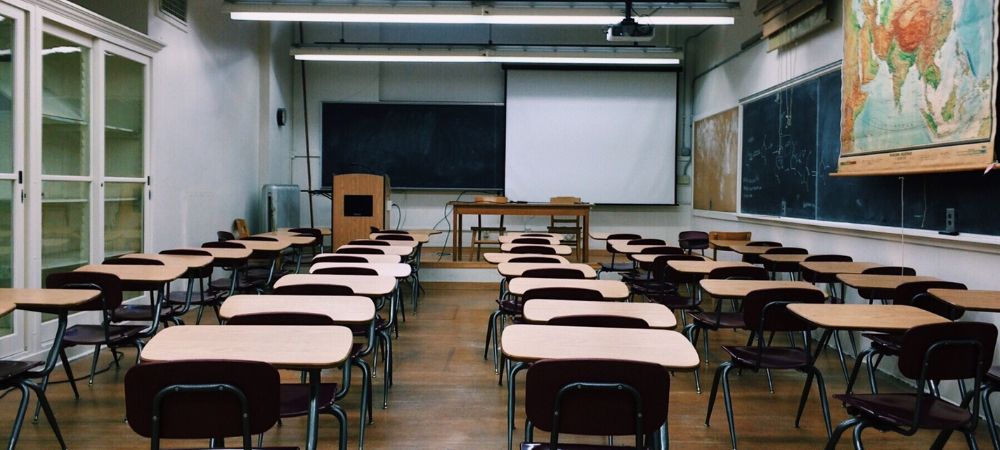

Alright, so let's talk about school systems worldwide. There are so many different approaches to education in different countries, you know? Like, some places have really strict rules and exams, while others focus more on creativity and hands-on learning. It's super interesting to see how each system has its own strengths and weaknesses.
One thing that's for sure is that no two school systems are exactly the same. Even within a single country, you can find variations based on location or socio-economic factors. And let's not forget about cultural differences – they play a huge role in shaping how schools operate.
additional information available check right now. To find out more view now.
Despite all these differences though, one common goal unites school systems around the world: to provide students with the tools they need to succeed in life. Whether it's through rigorous academic programs or vocational training, every system aims to prepare young people for the challenges of adulthood.
So next time you're complaining about homework or early mornings, just remember that there are kids halfway across the globe who would love to have the opportunities you do. School may not always be fun, but it's definitely important – no matter where you are in the world.
The historical development of school systems has been a long and complex process, with many changes and advancements along the way. From ancient times to the present day, schools have evolved in various ways to meet the needs of society.
In the past, education was often reserved for the elite few, with most people not having access to formal schooling. However, over time, there has been a push for more inclusive and widespread education for all individuals, regardless of their background or social status.
One major turning point in the development of school systems was the establishment of compulsory education laws in many countries. This meant that all children were required by law to attend school up to a certain age, ensuring that everyone had at least a basic level of education.
Another important development was the introduction of standardized curriculum and testing methods, which helped to ensure consistency and quality across different schools. This also led to the creation of more specialized educational programs and resources for students with diverse learning needs.
Throughout history, there have been many challenges and obstacles faced by school systems, including funding issues, teacher shortages, and changing societal expectations. For additional information click on this. Despite these difficulties, schools have continued to adapt and evolve in order to provide the best possible education for students.
Overall, the historical development of school systems is a testament to our ongoing commitment to providing quality education for all individuals. While there is still much work to be done in improving our educational systems, we can look back on how far we have come with pride and optimism for the future.
In today's fast-paced world, it's important to keep up with the latest developments in your field.. By continuously updating your skills and knowledge through lifelong learning, you can ensure that you stay competitive in the job market.

Posted by on 2024-05-02
Hey there!. So, let's talk about transforming your future with quality education opportunities.

Posted by on 2024-05-02
As we look ahead to the future, it's clear that technology will continue to have a profound impact on education.. From virtual reality to artificial intelligence, there are countless innovations that will shape the way students learn and teachers teach.
One major trend in educational technology is personalized learning.

Posted by on 2024-05-02
Parental involvement in early childhood education initiatives is so crucial!. It can have a huge impact on a child's development and success later in life.

Posted by on 2024-05-02
When it comes to promoting diversity and inclusion in schools, evaluating progress and making adjustments is key to ensuring continued commitment.. It's important that we constantly assess how we are doing and take steps to improve if needed.

Posted by on 2024-05-02
School systems have many key components that are essential for the proper functioning of the educational institution. Without these components, a school system can struggle to provide quality education to its students.
One important component of a school system is qualified teachers. Teachers play a crucial role in shaping the minds of young learners and helping them develop their skills and knowledge. Without qualified teachers, students may not receive the guidance and support they need to succeed academically.
Another key component of a school system is adequate resources. This includes textbooks, technology, and classroom materials that are necessary for effective teaching and learning. Without these resources, students may not have access to the tools they need to fully engage in their education.
Furthermore, strong leadership is essential for a school system to thrive. School administrators must be able to make important decisions that benefit both students and staff members. Without strong leadership, a school system may lack direction and cohesion.
In addition, parent involvement is critical for the success of a school system. When parents are actively engaged in their child's education, students are more likely to excel academically and socially. Without parent involvement, students may not receive the support they need outside of the classroom.
Overall, there are many key components that make up a successful school system. From qualified teachers to adequate resources to strong leadership, each component plays an important role in ensuring that students receive a quality education. By addressing these components, schools can create an environment where students can thrive and reach their full potential.

The government plays a crucial role in shaping school systems, ya know? They are responsible for setting the standards and regulations that schools must follow. Without their guidance, schools would be all over the place, ain't it?
One of the main ways the government influences school systems is through funding. They provide financial support to ensure that schools have the resources they need to educate students properly. If it weren't for this funding, many schools would struggle to provide quality education to their students.
In addition to funding, the government also sets curriculum standards that schools must adhere to. This ensures that all students receive a consistent education regardless of where they live or what school they attend. Without these standards, there would be a lot of variation in what students are taught, which could lead to gaps in knowledge and skills.
Overall, the government plays a vital role in shaping school systems and ensuring that all students have access to a quality education. We should be grateful for their involvement in our education system, don't you think?
School systems face a multitude of challenges in today's ever-changing educational landscape. From budget constraints to outdated curriculum, these obstacles can make it difficult for schools to provide the best possible education for their students.
One major challenge is funding shortages, which can lead to limited resources and overcrowded classrooms. This can negatively impact student learning and teacher morale, making it harder for schools to meet academic standards.
Another challenge is the lack of access to technology and other resources that are essential for modern education. Without proper tools and support, students may struggle to keep up with their peers and fall behind in crucial subjects.
Additionally, school systems must navigate complex regulations and policies that can hinder innovation and flexibility in teaching methods. This can stifle creativity and limit opportunities for students to explore new ideas and concepts.
Overall, the challenges faced by school systems are vast and varied, but with determination and support from the community, educators can overcome these obstacles and provide a high-quality education for all students. Let's work together to ensure that our schools have what they need to succeed!
Collaboration between schools and communities is so important for school systems! When schools and communities work together, they can create a better learning environment for students. Without collaboration, schools may not be able to meet the diverse needs of their students. The benefits of collaboration include improved student outcomes, increased community involvement in education, and enhanced resources for schools.
One reason why collaboration between schools and communities is crucial is because it allows for a more holistic approach to education. Schools cannot do it all on their own - they need the support and input of the community to truly make a difference in students' lives. For example, when parents are involved in their child's education, students are more likely to succeed academically.
Furthermore, collaboration between schools and communities can lead to innovative solutions to common problems in education. By working together, stakeholders can brainstorm ideas and implement new programs that benefit everyone involved. This type of teamwork fosters creativity and helps schools adapt to changing circumstances.
In conclusion, the importance of collaboration between schools and communities cannot be overstated. It is essential for creating a positive learning environment where all students can thrive. So let's continue to work together for the betterment of our school systems!
Technology has had a huge impact on modern school systems. From interactive whiteboards to online learning platforms, there are many ways in which technology has changed the way students learn and teachers teach.
One of the biggest impacts of technology on schools is the ability for students to access information quickly and easily. With just a few clicks, students can find answers to their questions or research topics for a project. This makes learning more efficient and allows students to delve deeper into subjects that interest them.
In addition, technology has made communication between teachers, parents, and students much easier. Emails, messaging apps, and online portals make it simple for everyone to stay connected and informed about what is happening in the classroom.
Despite these benefits, some argue that technology can be distracting for students and take away from traditional methods of learning. However, when used thoughtfully and with purpose, technology can enhance education rather than detract from it.
Overall, the impact of technology on modern school systems is undeniable. It has revolutionized the way we learn and teach, making education more accessible and engaging for everyone involved. Whether you're a student or a teacher, there's no denying that technology has changed the face of education forever!
When we talk about future trends in education and their implications for school systems, it's clear that things are going to change. With advancements in technology and a shifting global landscape, schools will need to adapt in order to keep up.
One of the biggest trends we're seeing is the move towards personalized learning. Instead of a one-size-fits-all approach, students are now able to learn at their own pace and in a way that works best for them. This means that teachers will have to be more flexible and creative in how they deliver lessons.
Another trend to consider is the rise of online learning. With the internet becoming more accessible, students can now access educational resources from anywhere in the world. This has both positive and negative implications for school systems - on one hand, it opens up new opportunities for learning, but on the other hand, it raises questions about how to ensure quality education is being delivered.
Overall, these trends point towards a future where schools will need to be more adaptable and open-minded in order to meet the needs of all students. It's an exciting time for education, but also a challenging one. As educators, we must be willing to embrace change and find new ways to engage with our students.
